Jump to:
Take a trip back in time with these vintage men’s hairstyles. Consider this your ultimate inspiration guide for old-school cuts. We’ll show you 30 unique styles, a few things to consider with each, and much more.
What Is a Vintage Men’s Hairstyle?
First, let’s define what “vintage” means in the context of men’s hair. This term gets used all the time, but what does it actually refer to? The consensus is that anything older than 20 years is considered vintage. That probably includes you.
However, something older than 100 years is more likely to be described as antique. That gives us a general range: 20 to 100 years. With that in mind, we’re looking at the 1920s through the 1990s.
This means that vintage men’s haircuts cover a wide range of styles. An 80s shag haircut is just as “vintage” as a 20s-style side part. Usually, vintage men’s haircuts are closely associated with a specific decade.
Many styles peaked during a certain decade and then fizzled out, while others have remained in fashion but were most popular during one decade.
Broadly speaking, most vintage men’s hairstyles in the first half of that time frame (1920s to 1950s) tend to be shorter and more formal. Cuts from the second half (1960s to 1990s) are usually longer and more casual. We’ll be taking a look at each decade throughout this list.
1. Vintage Side Part
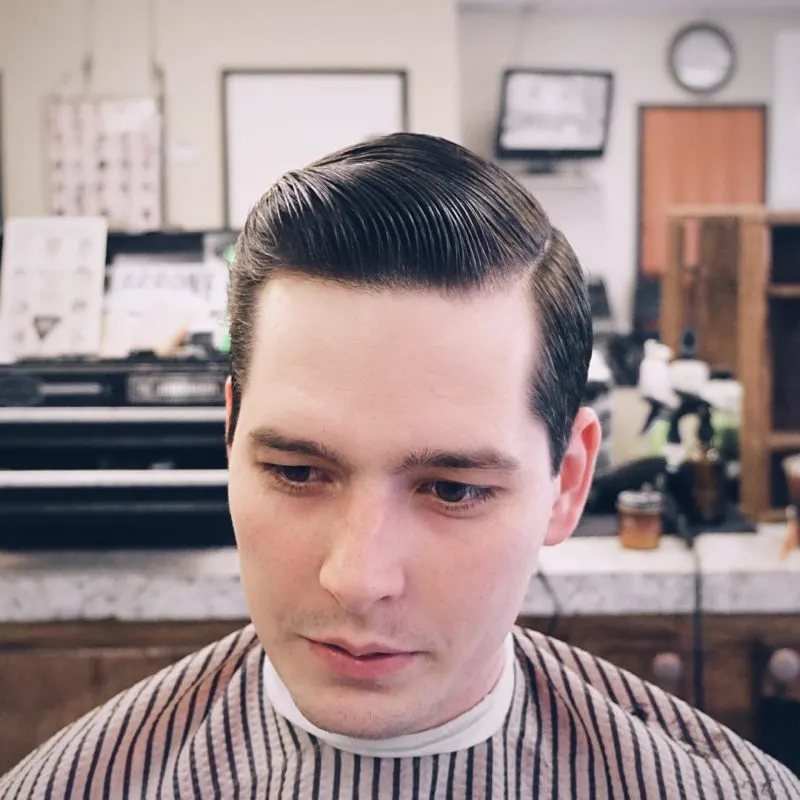
themailroombarber on Instagram
Let’s kick off with one of the most popular vintage men’s hairstyles: the side part. Specifically, we’re looking at the 1950s–style slicked back side part.
This is an iconic men’s hairstyle that uses a generous dose of pomade and precise styling to achieve the small quiff/pomp in front and, of course, the pronounced side part.
Read Next: How to Slick Back Hair
2. Updated Side Part
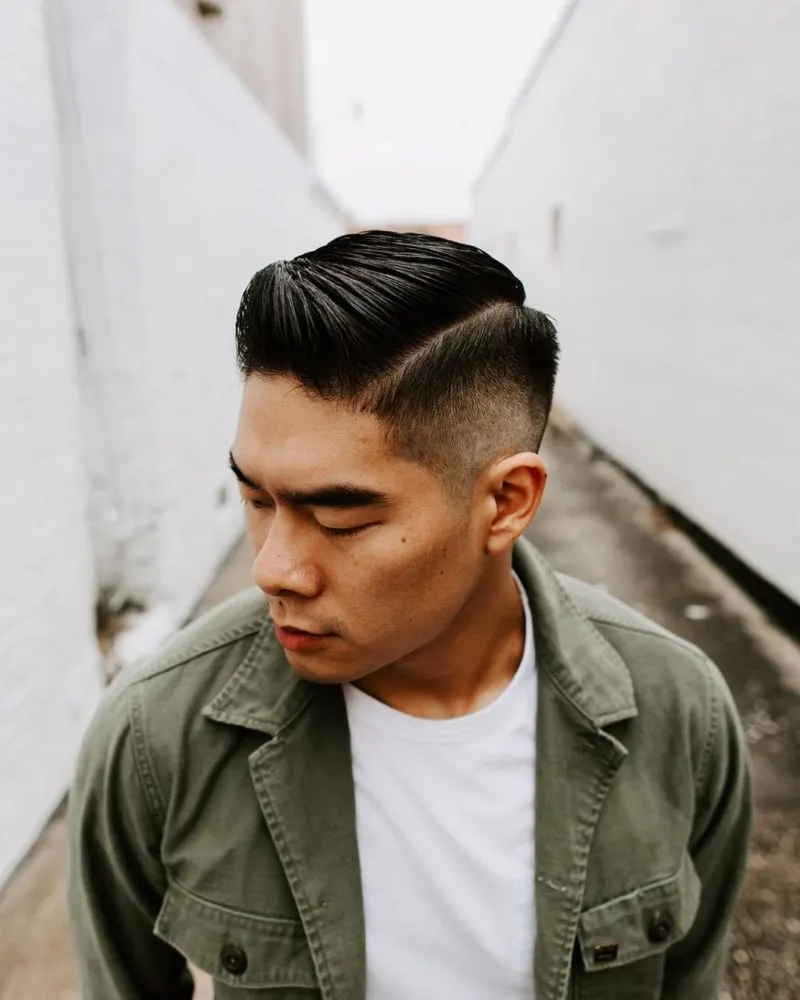
themailroombarber on Instagram
This side part variation is a combination of vintage and contemporary styling techniques. Like the vintage side part, this style features a small quiff in front and a strong side part.
And the hair also has a fair amount of shine. However, it’s not quite as shiny as a vintage side part, and it also features an extreme high drop fade.
3. Long Side Part
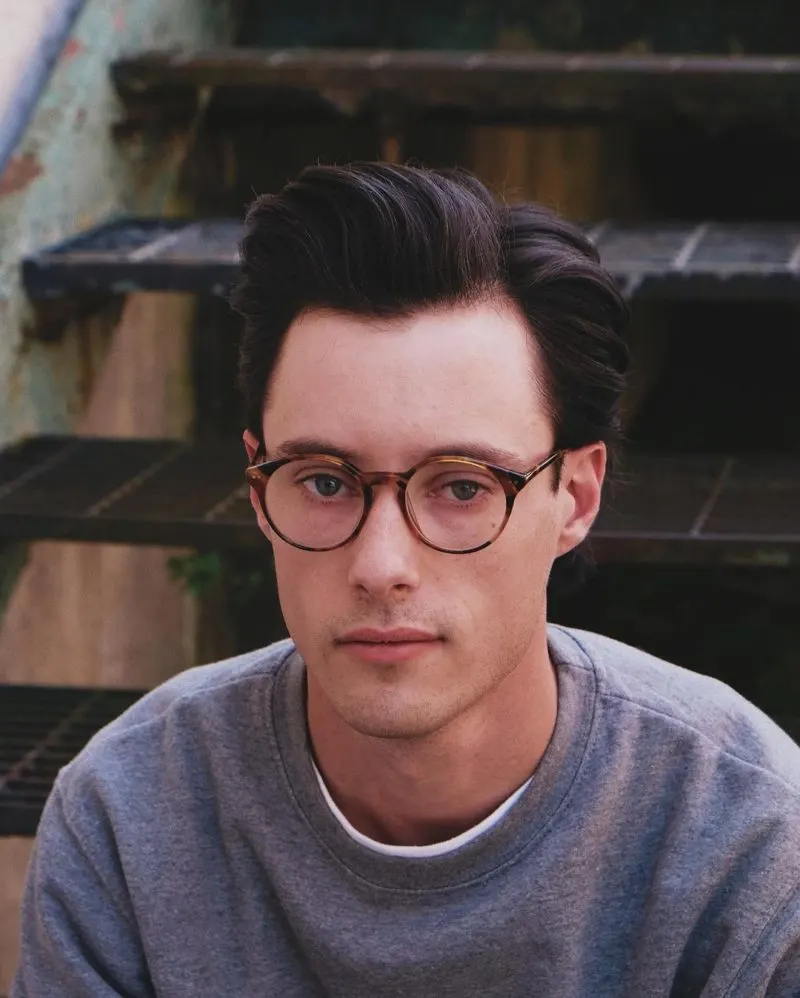
themailroombarber on Instagram
This is a more 90s–influenced side part style that is noticeably longer than either of the previous cuts. There’s a good 4-5 inches all around, which makes for a fuller look but a less pronounced part. It’s much more casual than a 50s side part and can be styled in a messier fashion.
4. Gentle Part
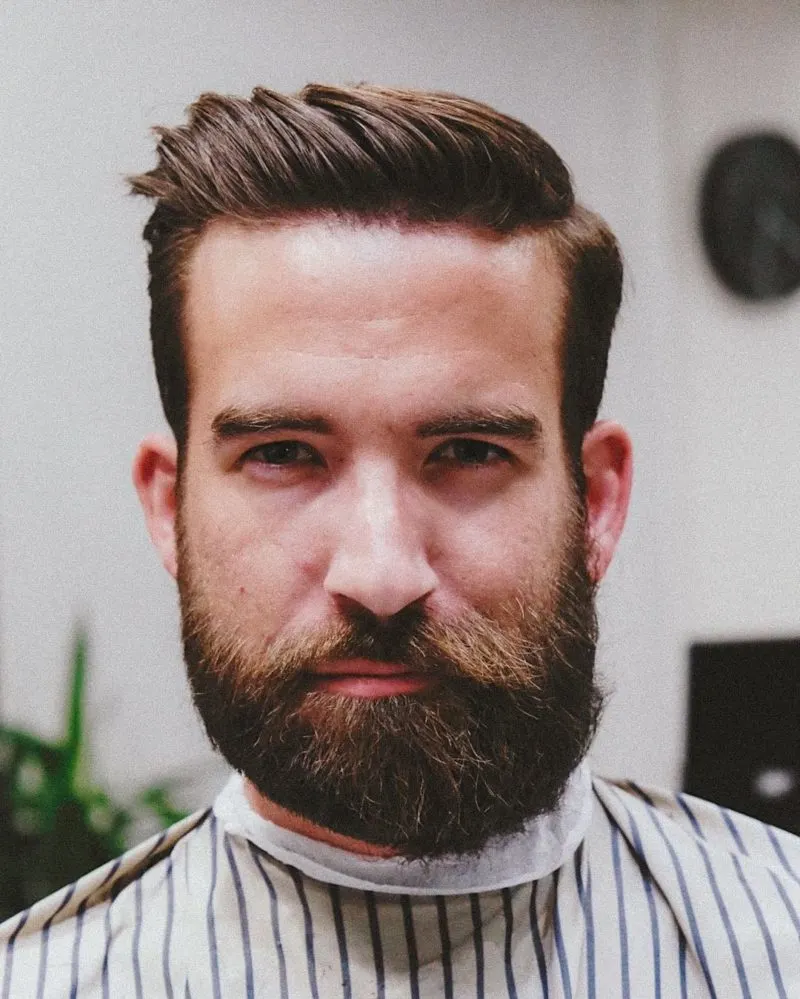
themailroombarber on Instagram
Side parts generally create contrast, but they can also give the hair definition. Here, the sides are longer and the top is shorter, resulting in a softer part that simply sections the hair off without creating too much contrast.
5. Slick and Tight
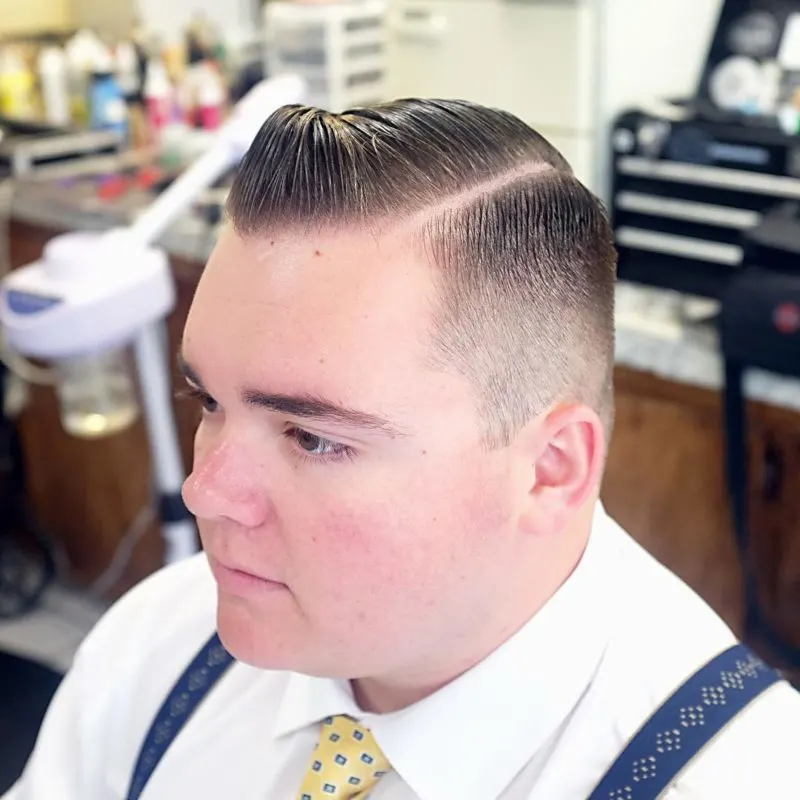
themailroombarber on Instagram
This side part style takes many style cues from the high and tight to create an early vintage look that would be right at home in the 1930s. Pomade is used to slick back the hair, which is then combed into place, and a hard part line is shaved into the head for contrast.
Read Next: High and Tight Haircut Ideas
6. Dapper Businessman
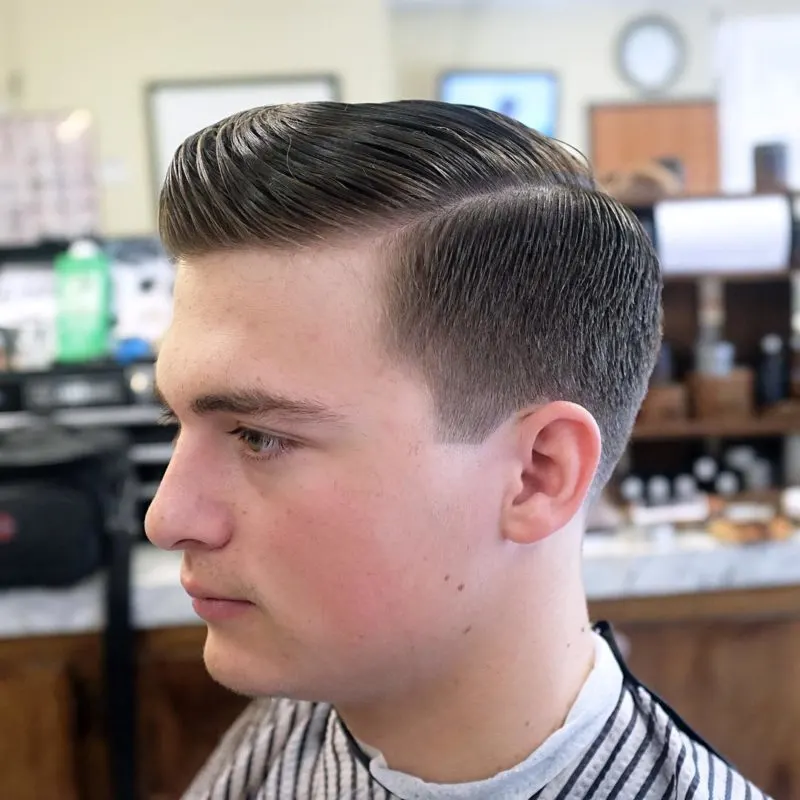
themailroombarber on Instagram
Here’s a side part style that’s reminiscent of the types of cuts that mid-century businessmen wore. The front is combed to the side, making a sort of rounded pompadour, and the sides are kept longer and only partially faded to ensure the hair looks thick and full.
7. Loose Tapered Part
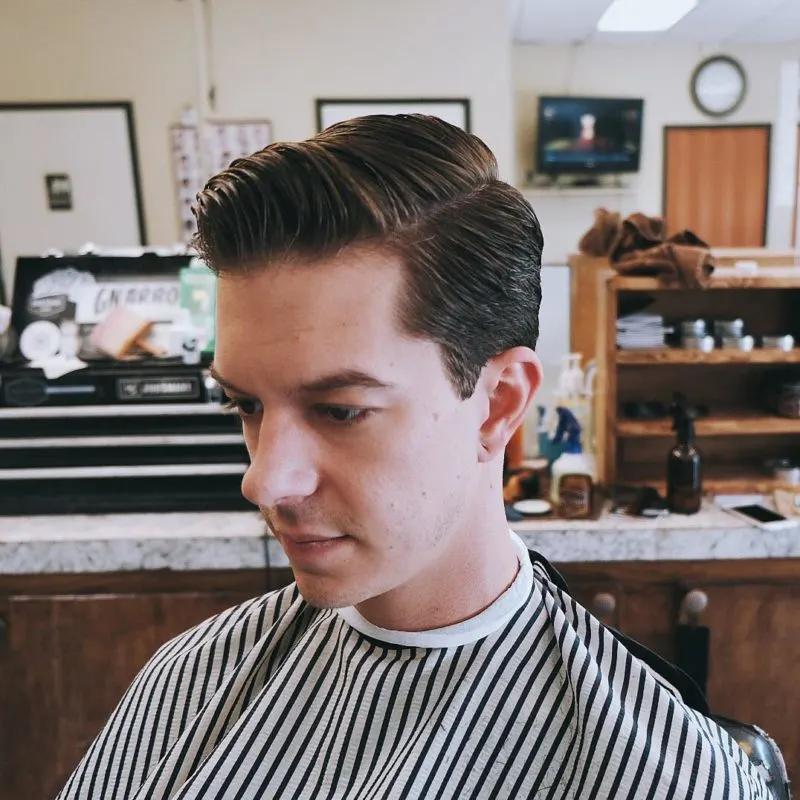
themailroombarber on Instagram
Another longer side part style, this cut features a healthy quiff up top and longer sides that are only slightly tapered. The part draws the eye to the tall quiff.
So the part itself isn’t really in the spotlight here. If you like modern quiffs but want something more classic, this might be the look for you.
8. Asian Side Part
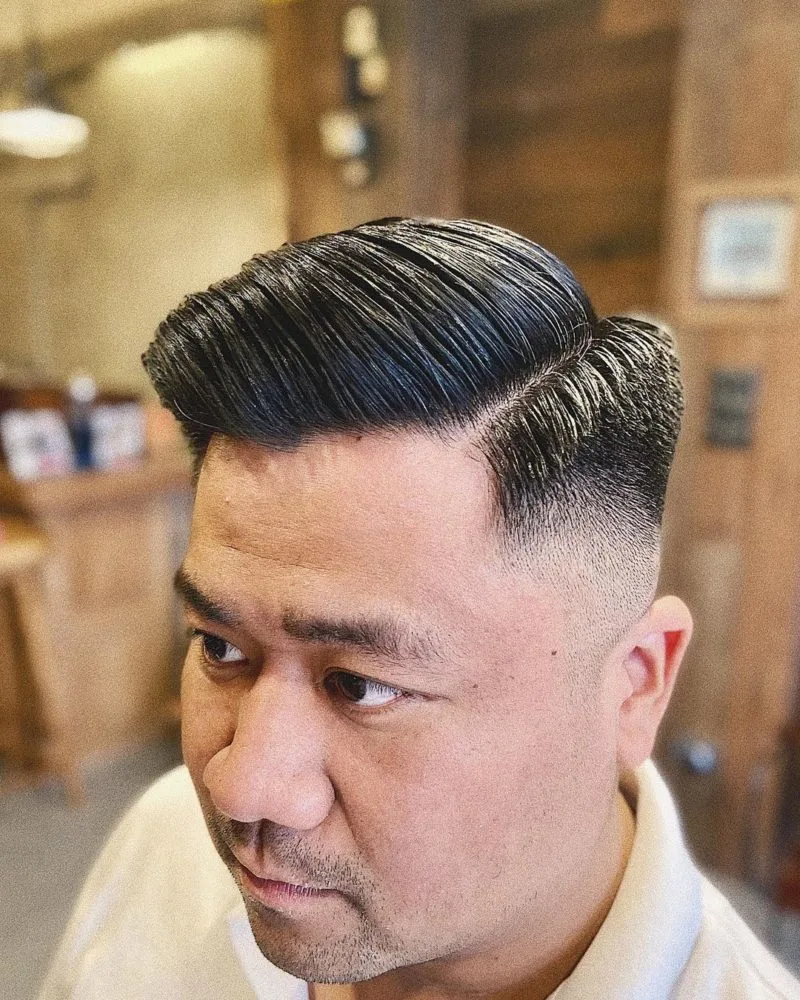
hairhousebyadamchan on Instagram
Asian hair is quite different to European hair, so it requires a different touch. And as barber Adam Chan notes, Asian heads are also shaped differently. One way to get a classic side part look is to take up the sides with a mid to high fade and opt for a side-swept pomp on top.
9. Casual Vintage

themailroombarber on Instagram
Many men’s hairstyles from the 80s and 90s are casual and relaxed, and you can get that effect by simply combing the hair back in a subtle part.
The slightly side-swept top isn’t much longer than the sides, so you get a lot of fullness. (Also, the mustache definitely gives you extra vintage points.)
10. Wavy Mullet
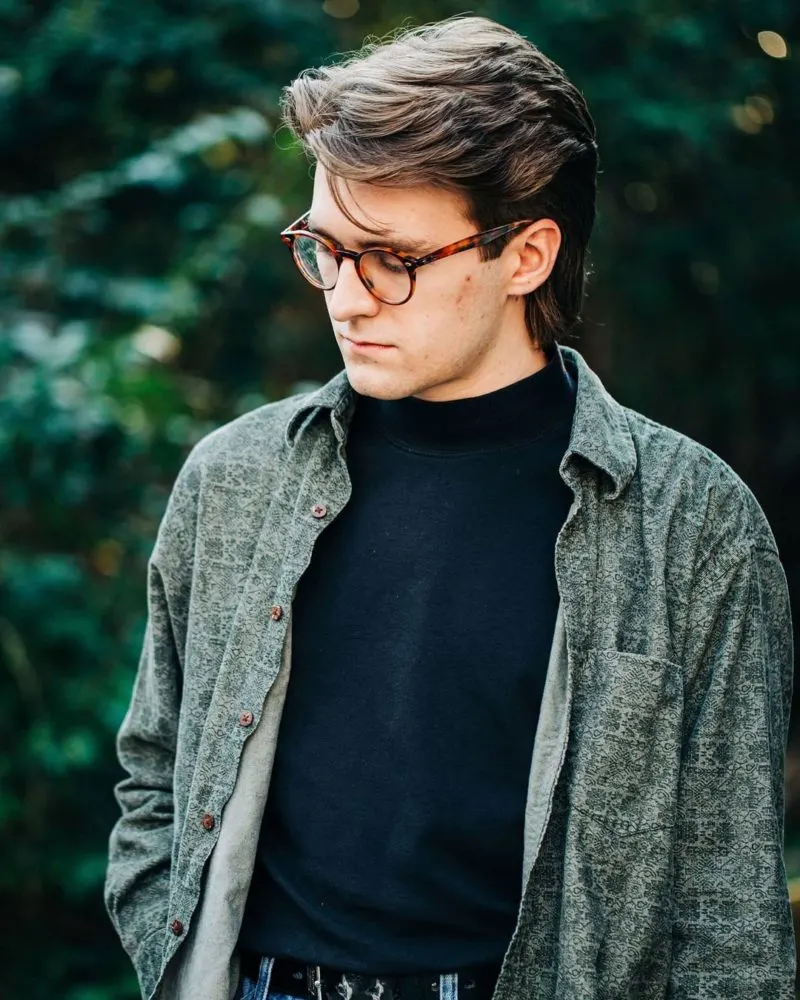
themailroombarber on Instagram
The mullet is the men’s hairstyle that defined the 1980s. There are many ways to style a mullet, but we really like this textured look that features choppy waves that lead to the mullet. It’s not a super long mullet, either, and the hair is almost the same length on the top and in the back.
11. Casual Mullet
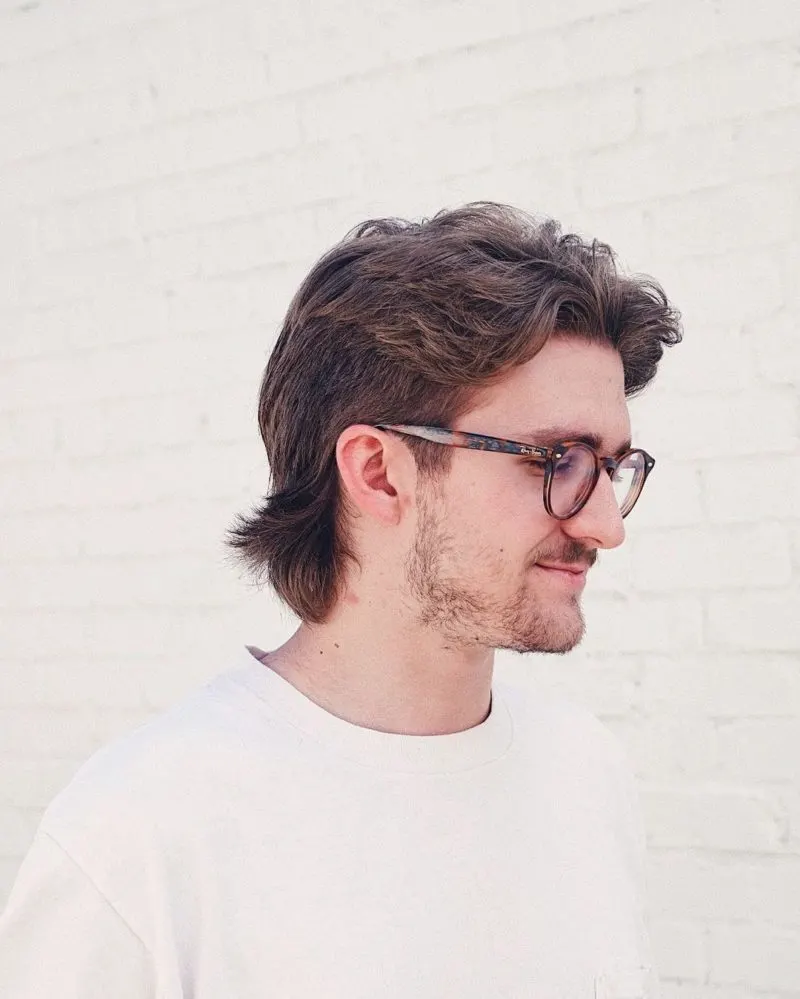
themailroombarber on Instagram
For a messier mullet, try this laid-back style that has those classic mullet wings in the back. The top is tousled and loosely parted in the middle. There’s still a good amount of texture here, but it’s much more a “just rolled out of bed” look than the previous mullet.
Read Next: The Modern Mullet
12. 80s Quiff
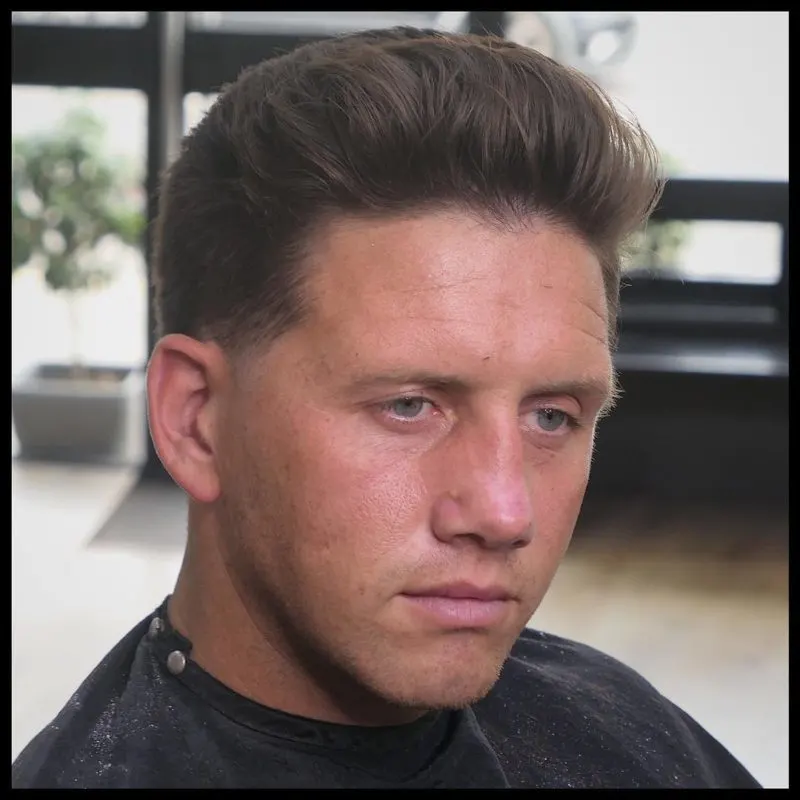
mengo_male_grooming on Instagram
While the quiff as we know it today wasn’t popular in the 80s, a unique style of quiff could be seen on many guys’ heads. This long and loose look comprised a brushed back quiff and longer, tapered sides. The relaxed, airy texture of the quiff is key.
13. Pompadour
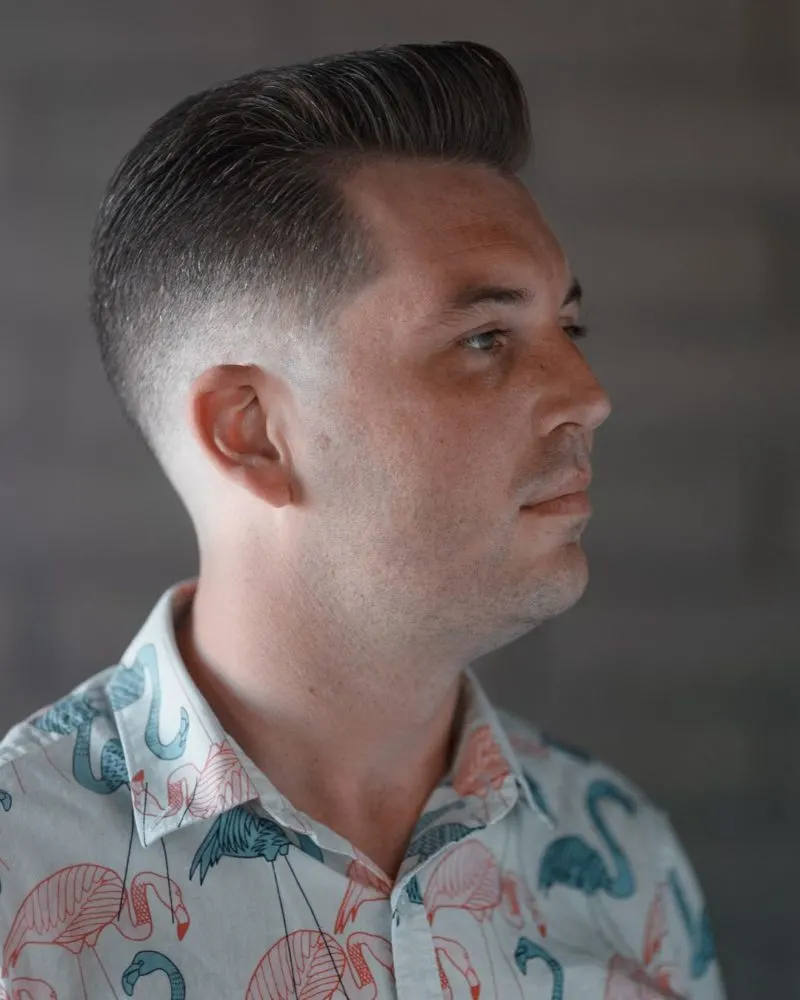
andrewdoeshair on Instagram
Another classic vintage hairstyle, the pompadour is arguably even more memorable than the side part thanks to none other than Elvis. Of course, there are many ways to achieve a pomp.
And the style here has many of those vintage hallmarks. The dramatic, slicked back top is the star here, and the way the pomp blends into the hair in the back is also crucial to get right.
14. Greaser
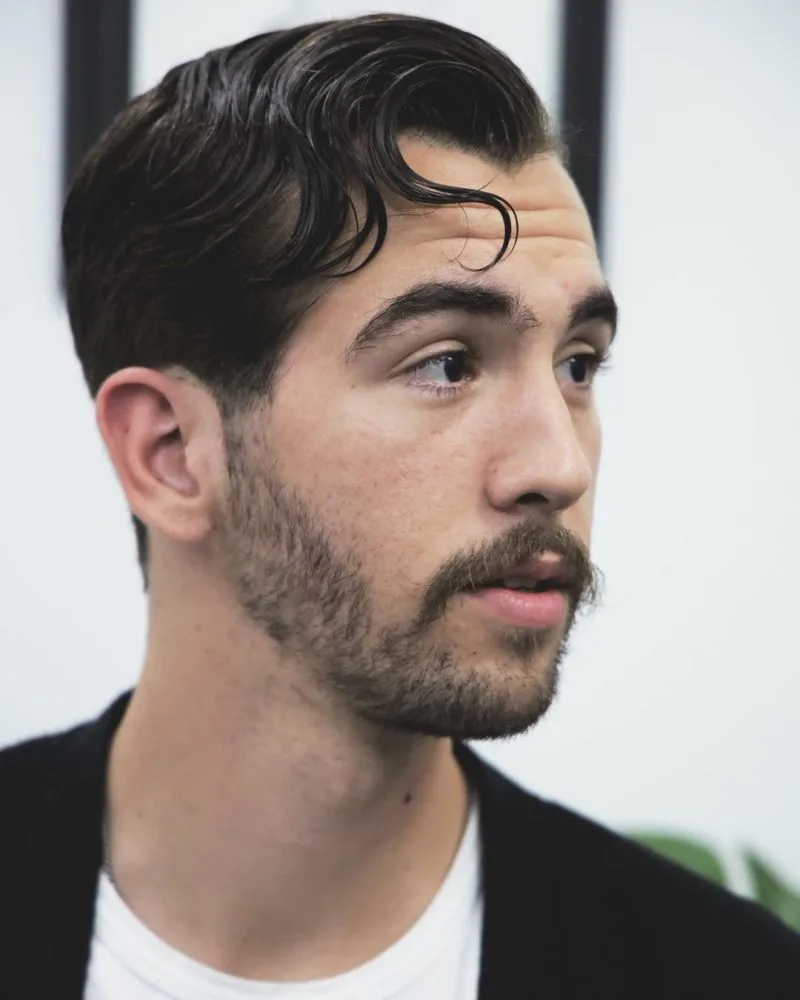
andrewdoeshair on Instagram
Another iconic 50s and 60s style is the greaser look that’s depicted in films like Grease and The Outsiders. A stylistic way to get that look is to slick the hair with pomade and style the top into drooping curls that hang down. It’s an edgy alternative to a quiff that embodies the greaser spirit.
15. Textured Crew Cut
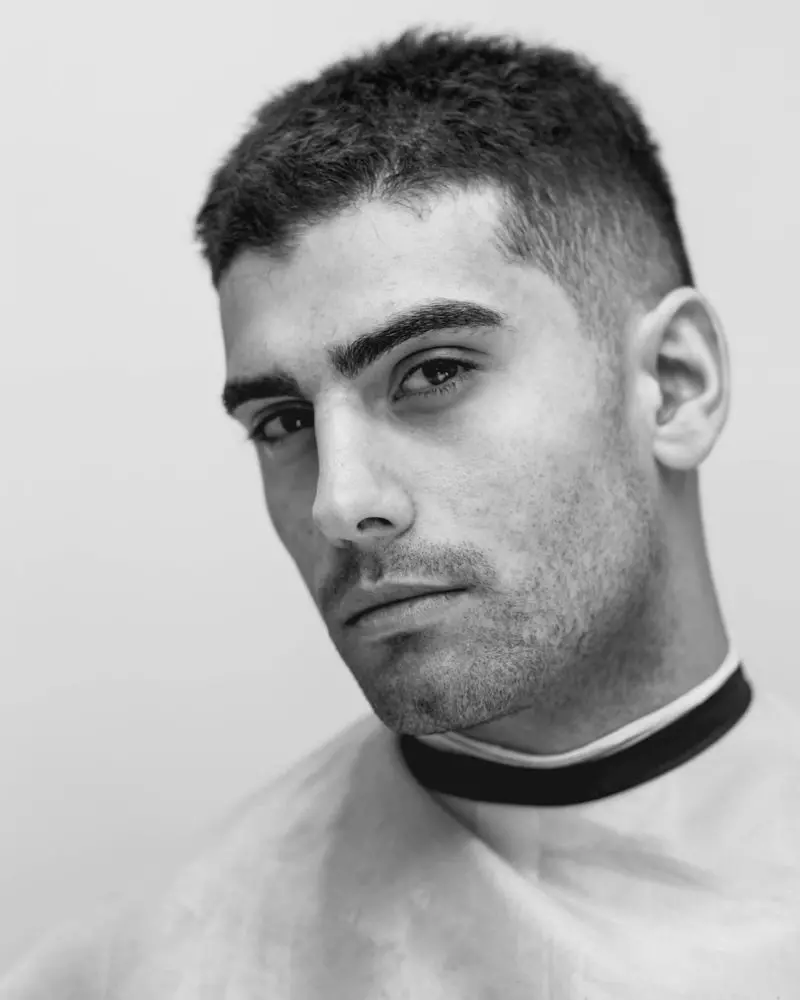
andrewdoeshair on Instagram
The crew cut is one of the most famous vintage men’s hairstyles, and there are tons of ways to wear one. This style is a 90s-influenced crew cut with a textured top and evenly faded sides. It’s much longer and more causal than a military regulation crew cut.
16. Brushed Back
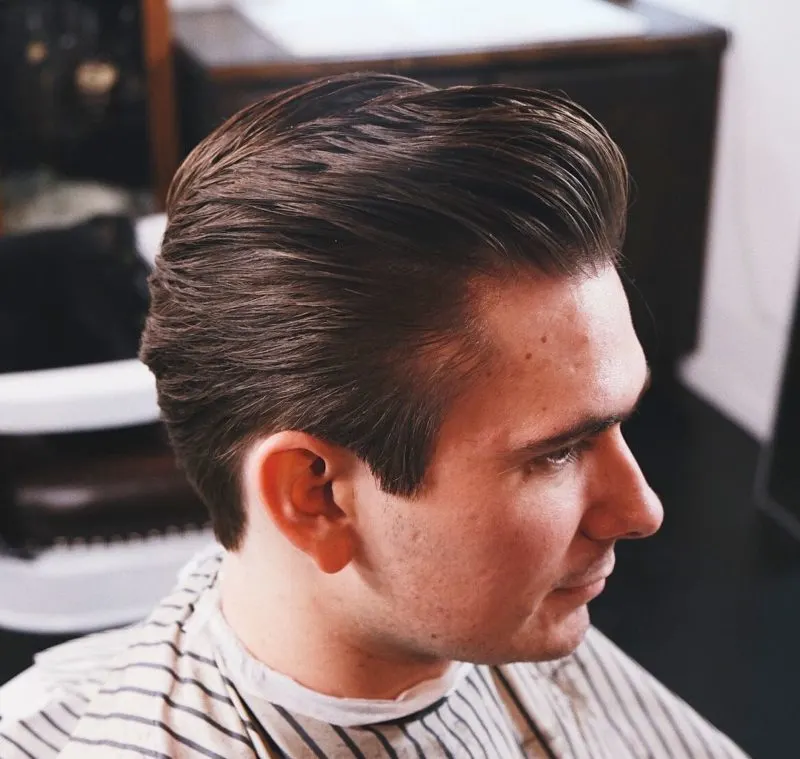
themailroombarber on Instagram
This brushed back look is somewhat timeless; it could fit right into any decade. It’s created by carefully layering the hair and keeping everything long. The back and sides are especially on the longer side, and if you opt for a taper, you won’t get quite the same effect.
17. Extra Full
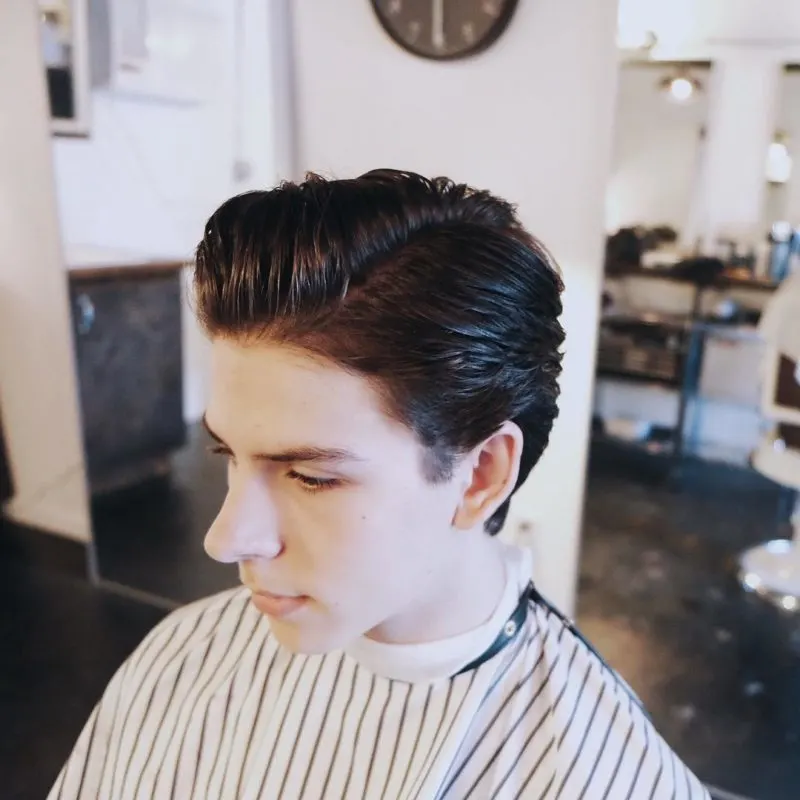
themailroombarber on Instagram
If fullness is your top priority, then it’s hard to beat this style. It’s a long brushed back style that’s ideal for thick and coarse hair. To complete the look, you need something like a pomade that has a good amount of shine to give the hair that vibrant reflective quality without making it look greasy.
18. Medium Shag
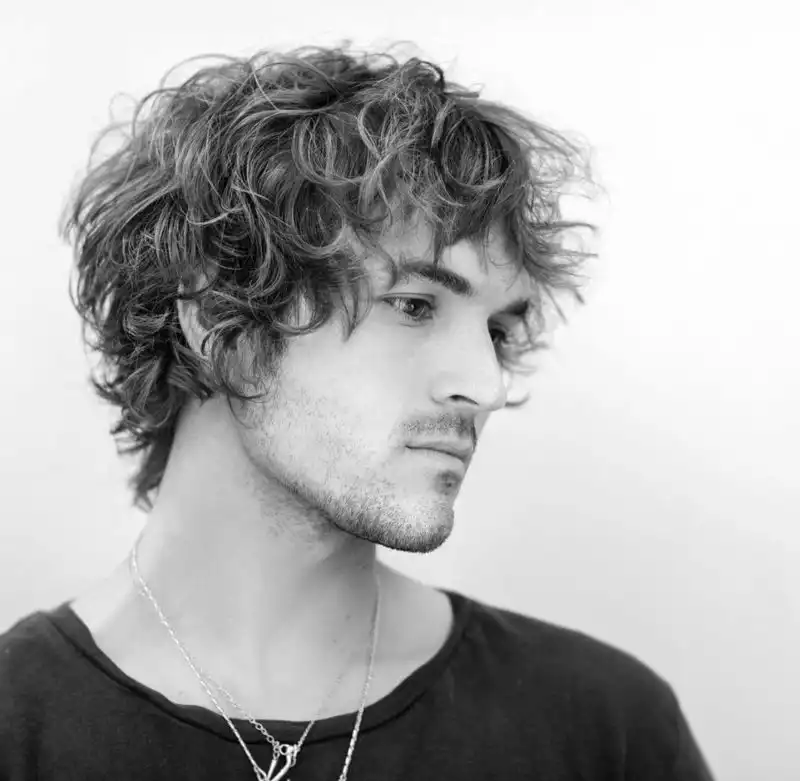
andrewdoeshair on Instagram
The shag style is most commonly associated with the 1970s, but you can find this casual look across multiple decades. This medium shag allows the curly hair to do its thing and keeps the hair quite messy to really emphasize the textures and shapes.
19. 90s Point Cut
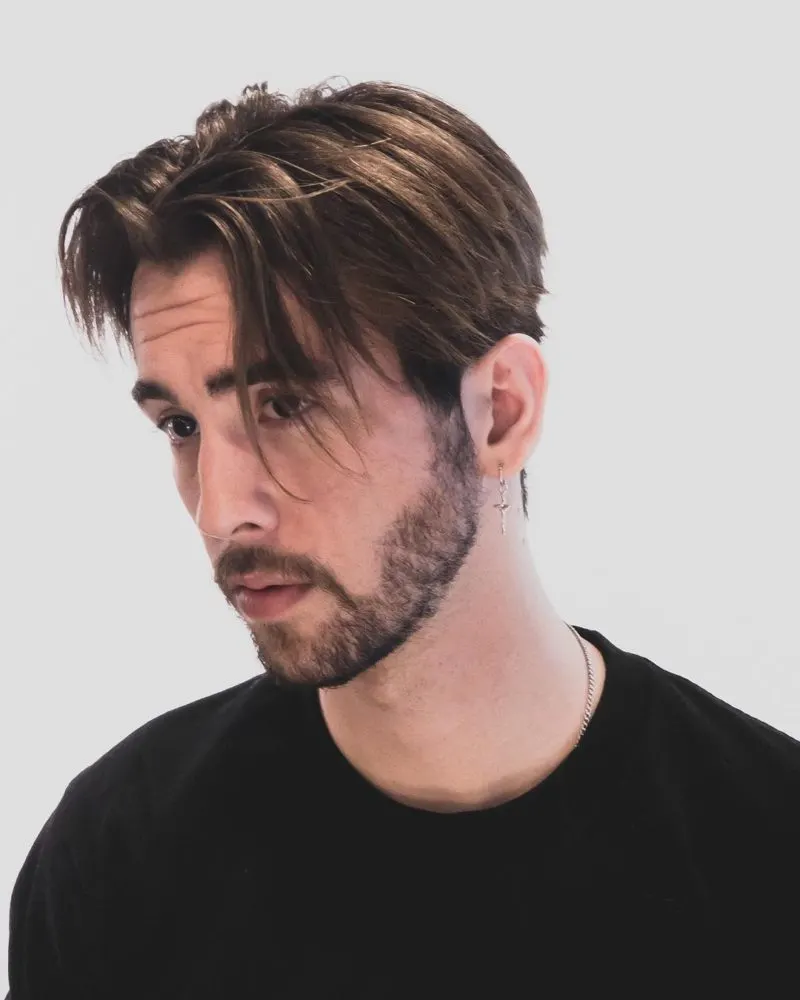
themailroombarber on Instagram
For an authentic 90s look, try out this laid-back point cut with loose fringe strands that hang well past eye level. The point cut provides movement and ensures that the hair blends seamlessly. The middle part is absolutely essential for this cut that evokes sitcom stars like Jonathan Taylor Thomas.
20. Super Slick
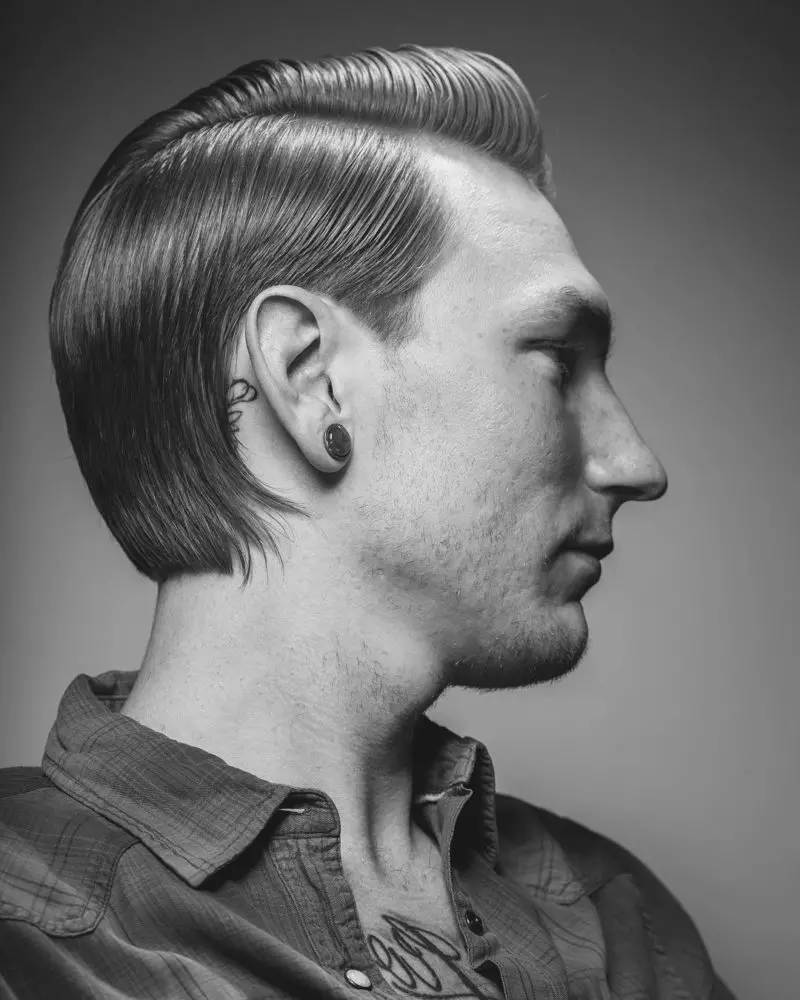
themailroombarber on Instagram
If you really want to lean into that 50s/60s slickness, you could go for this style that completely slicks all of the hair. This creates a wet look with a ton of definition. The hair in the back precisely follows the contour of the ear, and the side part rounds out the style.
21. Peaky Undercut

themailroombarber on Instagram
Peaky Blinders may not be completely accurate in the hair department, but its famous hairstyles were indeed inspired by gangs from the early 1900s.
One of the most well-known styles from the show is the undercut that appears on the head of Thomas Shelby. This vintage undercut consists of a high skin fade on the sides and a swooping top that’s about 3-4 inches long.
22. Vintage Side Swept With Handlebar
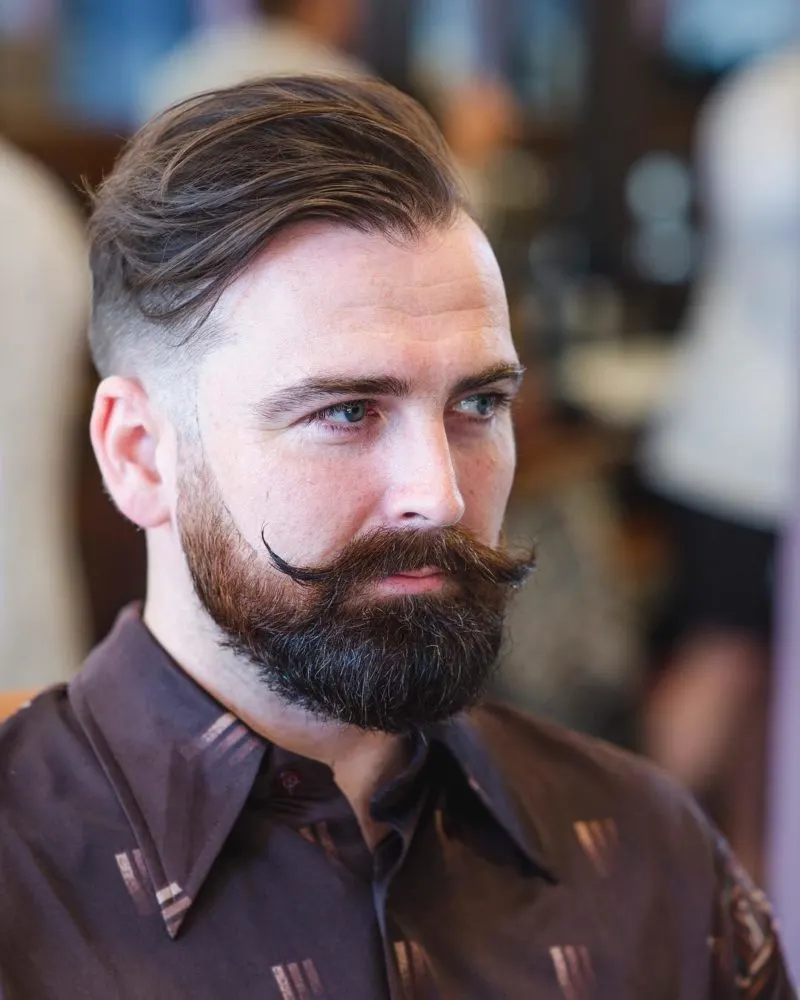
andrewdoeshair on Instagram
This style evokes the 1920s while adding in a few contemporary touches. The handlebar mustache and rounded beard are about as vintage as it gets, while the faded sides and neatly swept hair are more modern.
23. Quiff and Mustache
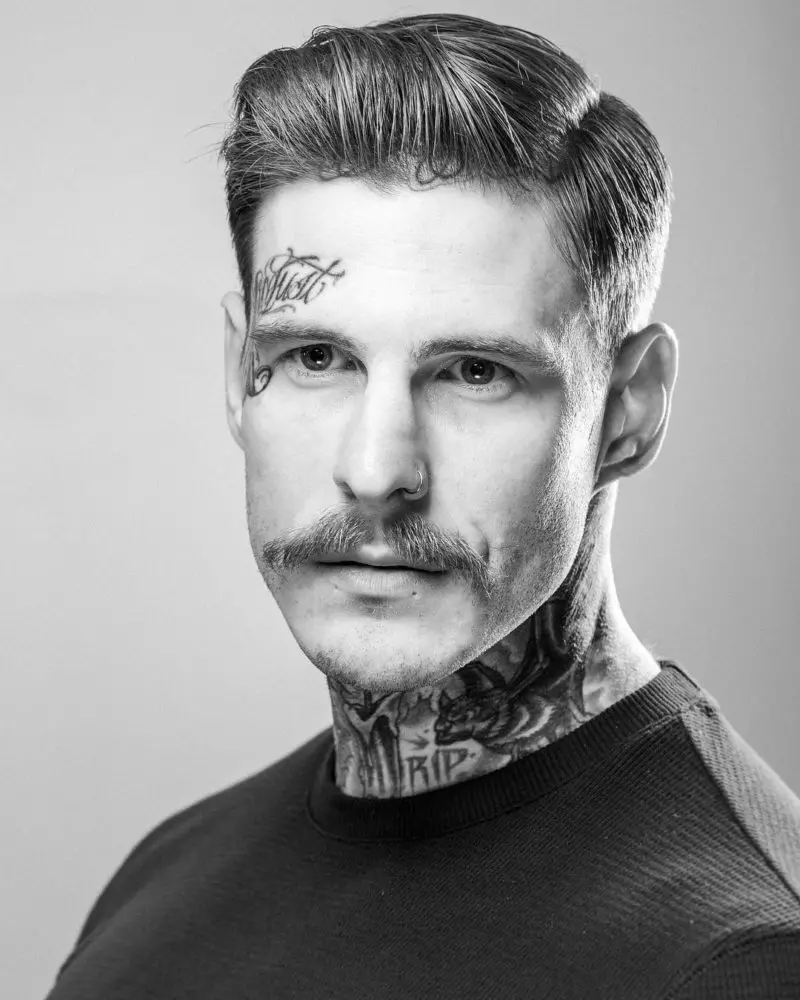
andrewdoeshair on Instagram
Often, the right facial hair will bring out the vintage vibes in many of these hairstyles. On its own, this short quiff with a side part could be from any time period, but add in the mustache and you get a strong Peaky Blinders vibe.
24. Long Shag
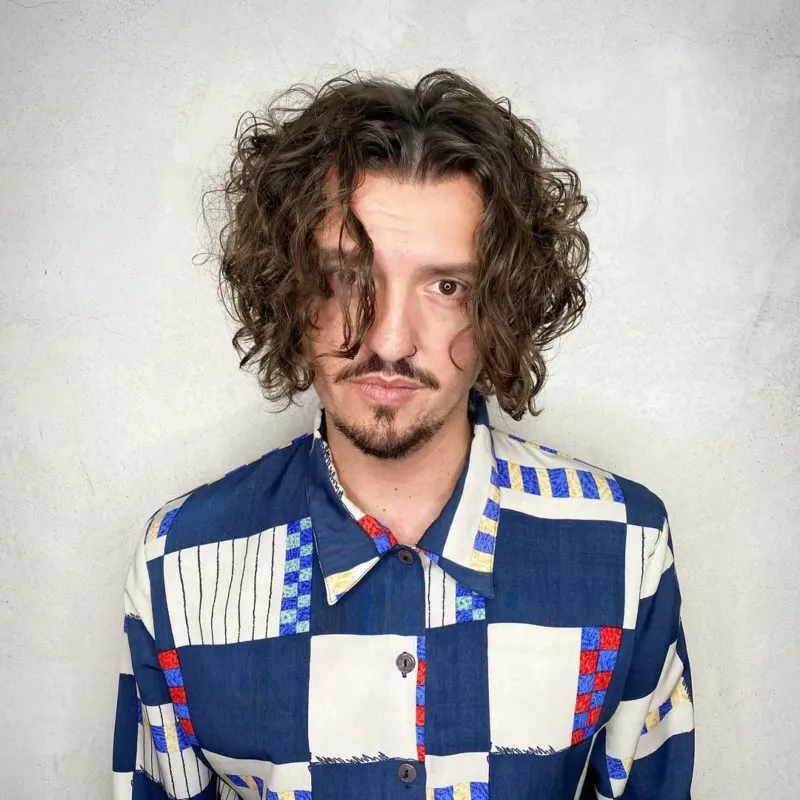
themailroombarber on Instagram
Another take on the shag style, this haircut is clearly inspired by the 1970s. The hair is parted in the middle and hangs down to just above chin level. Like most shags, this look works best with curly, kinky, or coiled hair.
25. River Phoenix
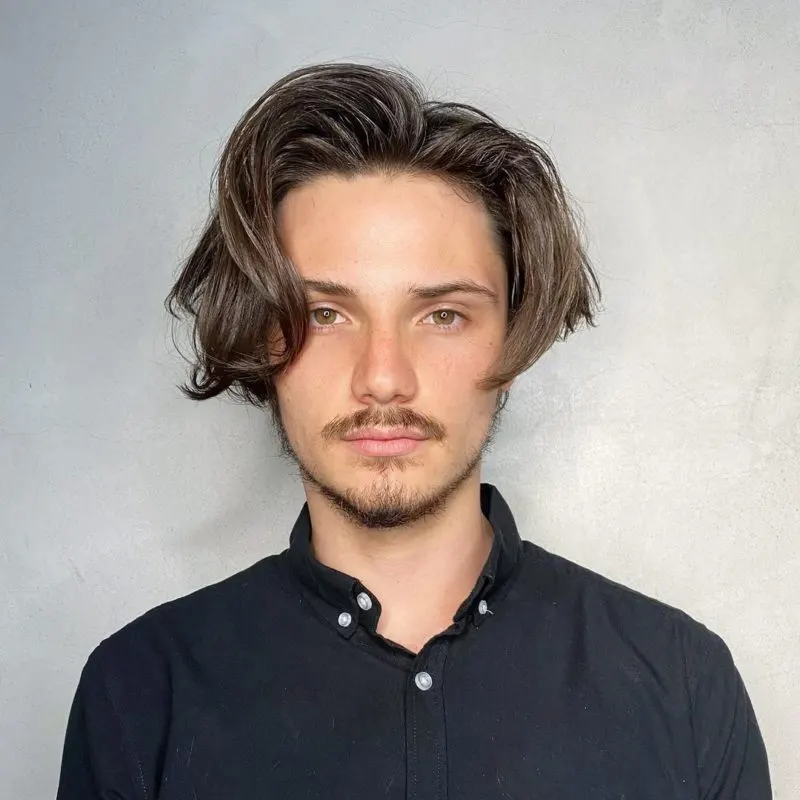
cellardoorhair on Instagram
This late 80s/early 90s look is directly inspired by actor and musician River Phoenix. This thick and top-heavy cut features dramatically sweeping curls and evokes the long and casual styles Phoenix was often seen sporting.
26. Flat Top
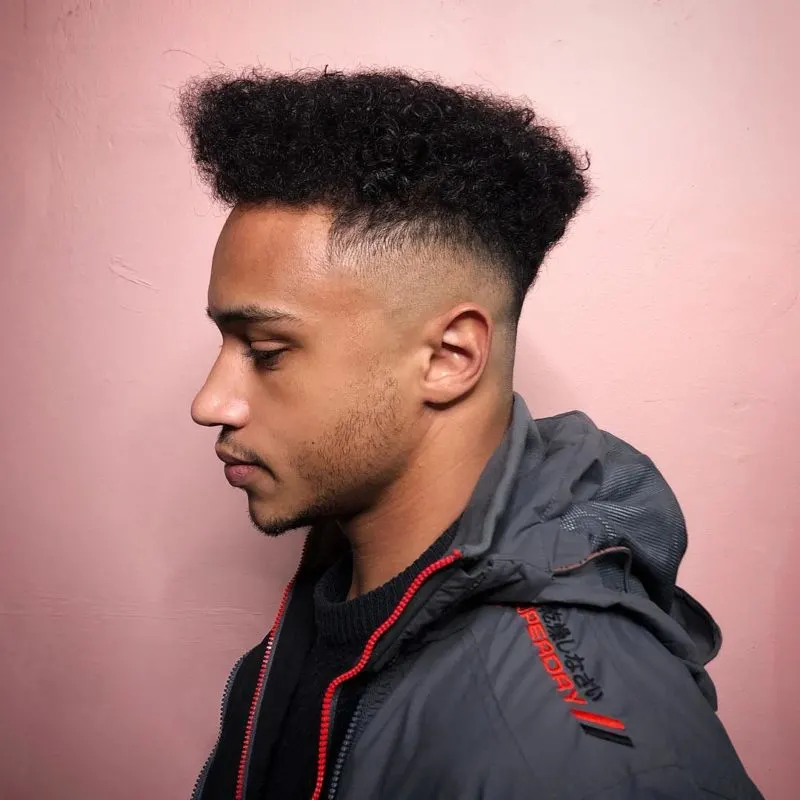
cellardoorhair on Instagram
While you can still see it today, the flat top was most popular from the 1970s through the 1990s. It’s an instantly recognizable style that shows off the texture of kinky or coiled hair, so it’s ideal for 4a, 4b, or 4c type hair. You can also change the height and shape of the top to get different results.
27. Styled Crew
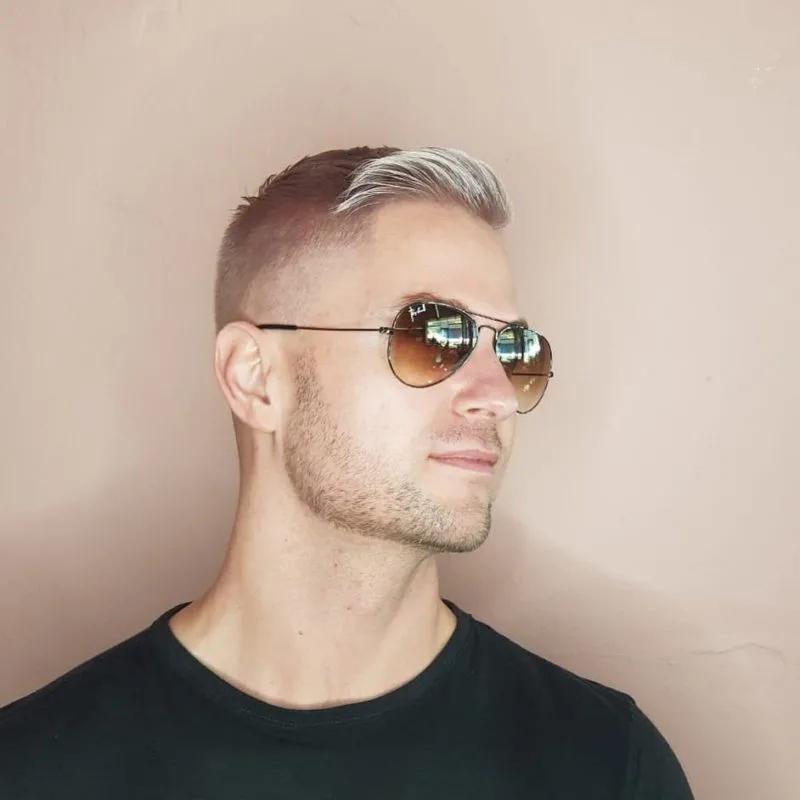
cellardoorhair on Instagram
Another vintage way to rock a crew cut is with a super short side-swept portion in front and a mid fade on the sides. This makes for a surfy, wind-blown 80s/90s cut that looks sharp and stylish.
28. Short and Slick
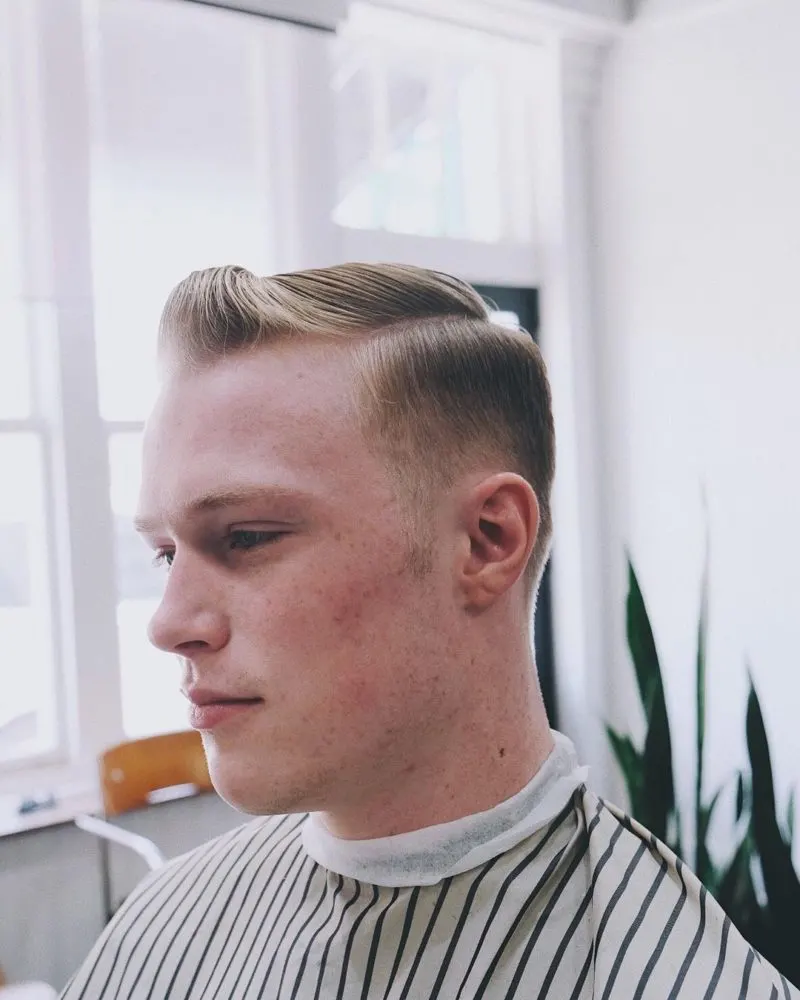
themailroombarber on Instagram
If you like slick 50s–style haircuts but don’t love the shiny finish, then you’ll be happy to know you can still get that style with a more matte finish. The trick is to comb the hair into place to create those trademark waves and use a non-shine product (like a clay) to mattify the hair.
29. Simple Comb Style
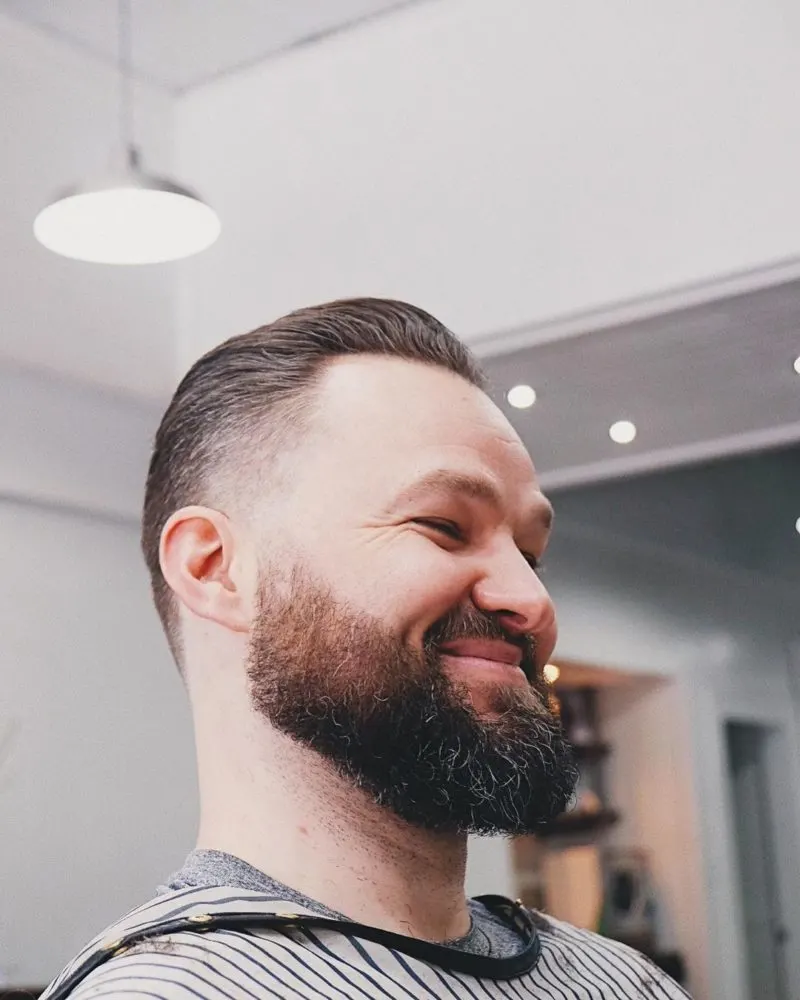
themailroombarber on Instagram
This short, simple vintage men’s hairstyle just requires the hair to be combed straight back. Since this is such a short and low-maintenance style, it will work with just about any hair type, and it’s good for both casual and formal scenarios.
30. Wavy Length
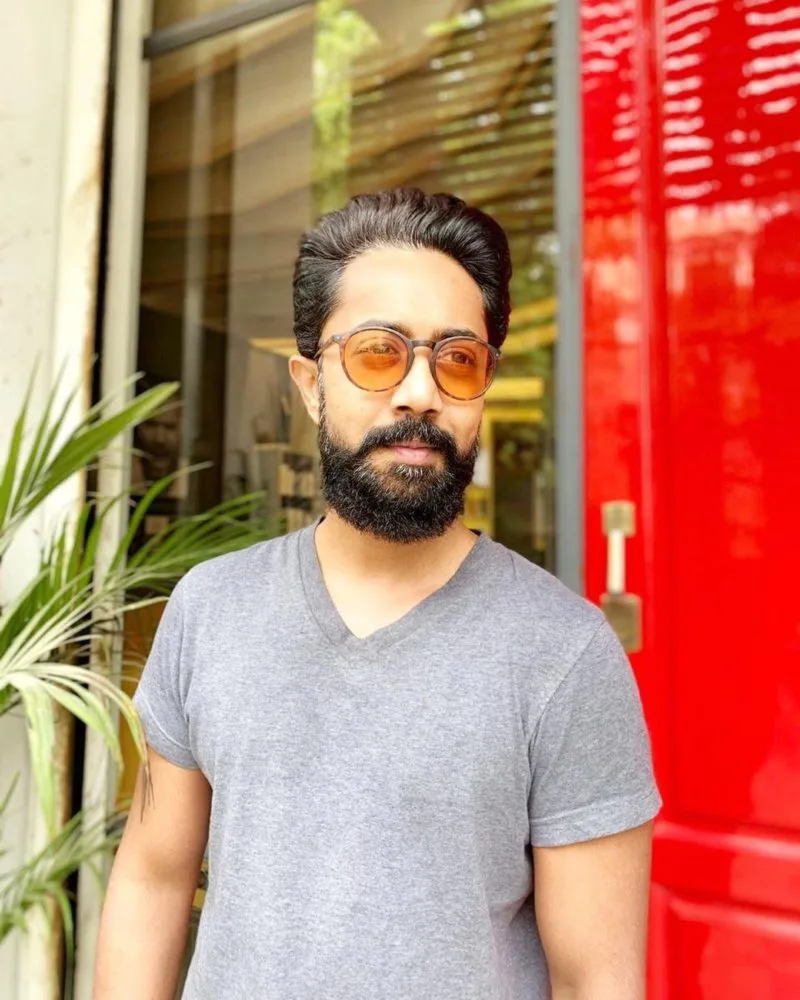
vurvesalon on Instagram
Last but not least, here’s a long and wavy hairstyle for men that hearkens back to the 1980s. The hair is simply brushed straight back, but it’s also fluffed up a bit. You need a good 3-5 inches of hair in order to get the necessary volume.
Things to Consider
Here are a few tips to keep in mind when choosing a vintage hairstyle to rock:
- A picture is worth a thousand words. Showing a picture of the style you want to your barber or stylist can really help ensure that you get the exact vintage look you want. (This is also good advice for any haircut.)
- When in doubt, go longer and fuller. Vintage hairstyles tend to be significantly longer than contemporary ones, so you won’t find a lot of high skin fades.
- Don’t mix decades unless you’re really confident. It’s not easy to combine multiple vintage elements, so you’re usually better off sticking to a specific style. If you want to combine elements, be sure to ask your barber or stylist first to make sure it’ll look the way you want it to.
Which Vintage Men’s Hairstyle Will You Choose?
Ultimately, choosing a vintage hairstyle depends on what you want. Some of these styles are hard to pull off without the accompanying fashion, but others are more versatile.
If you draw fashion inspiration from a specific decade, then a vintage men’s haircut from that decade will fit you like a glove.
On the other hand, many of these cuts (especially the more conservative ones) are pretty timeless and will look good no matter what. Hopefully this guide has helped you figure out what flavor of vintage is right for you.
